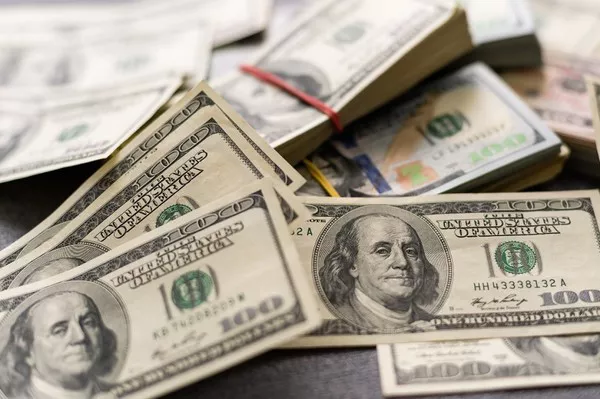The foreign exchange market is a dynamic and complex environment, where currencies fluctuate in value relative to one another. One of the most closely watched currency pairs is the U.S. Dollar (USD) and the Euro (EUR). Investors, traders, and economists often ponder whether the dollar will continue to rise against the euro. In this article, we will explore the factors influencing this currency pair and analyze whether the U.S. dollar’s upward trend is likely to persist.
The Historical Context
To understand the potential future movements of the USD/EUR currency pair, it’s essential to look at its historical performance. Over the years, this pair has experienced various phases of strength and weakness for both currencies. Key historical points include:
Euro Introduction (1999): The euro was introduced as an electronic currency in 1999 and as physical banknotes and coins in 2002. Its arrival marked the beginning of a new era for the European currency market.
Global Financial Crisis (2008): The global financial crisis saw the U.S. dollar strengthen as a safe-haven currency, causing the USD/EUR pair to surge.
Eurozone Debt Crisis (2010-2012): The euro faced significant challenges during the Eurozone debt crisis, leading to a notable depreciation against the U.S. dollar.
Euro Resilience (2013-2017): From 2013 to 2017, the euro staged a recovery, with the USD/EUR pair experiencing a period of euro strength.
Dollar Dominance (2018-Present): Since 2018, the U.S. dollar has shown strength, driven by various factors, including interest rate differentials and economic performance.
Factors Influencing the USD/EUR Pair
The future performance of the USD/EUR currency pair is influenced by a range of factors. Here are some key determinants that shape the dynamics of this currency relationship:
Interest Rates: Central banks’ interest rate policies significantly impact currency values. A higher interest rate in the U.S. compared to the Eurozone can attract foreign capital, strengthening the U.S. dollar.
Economic Data: Economic indicators, such as GDP growth, employment figures, and inflation rates, influence currency values. Strong economic performance in one region often results in a stronger currency.
Central Bank Policy: Monetary policy decisions made by the U.S. Federal Reserve and the European Central Bank, including quantitative easing, interest rate changes, and asset purchases, have profound effects on currency values.
Geopolitical Events: Geopolitical developments and global events can trigger market volatility and influence investor sentiment, affecting currency movements.
Trade Relations: Trade balances and trade agreements can have long-term effects on currencies. Trade tensions or shifts in trade relations can impact the USD/EUR pair.
Market Sentiment: Market sentiment, often driven by risk-on or risk-off dynamics, can lead to fluctuations in currency values. The U.S. dollar is sometimes viewed as a safe-haven currency.
Relative Inflation Rates: Inflation differentials between the U.S. and the Eurozone can impact currency values. A higher inflation rate in one region can erode the real value of its currency.
Analyzing the Current Landscape
As of the time of writing, the U.S. dollar has been on an upward trajectory against the euro for several years. This trend can be attributed to a combination of factors, including:
Interest Rate Differentials: The U.S. Federal Reserve has raised interest rates more aggressively than the European Central Bank in recent years. This has made U.S. assets more attractive to investors seeking higher returns, boosting the demand for the U.S. dollar.
Economic Performance: The U.S. economy has exhibited robust growth, low unemployment, and increased consumer spending. In contrast, the Eurozone faced challenges such as sluggish economic growth and concerns over the debt levels of some member countries.
Trade Tensions: Trade tensions between the U.S. and various trading partners, including the European Union, have impacted currency values. These disputes have led to uncertainty and risk aversion, making the U.S. dollar an appealing safe-haven asset.
Political Developments: Political events within the Eurozone, such as Brexit and concerns about populist movements in certain countries, have weighed on the euro.
Pandemic Impact: The COVID-19 pandemic and its economic consequences have led to varying responses by central banks. The U.S. Federal Reserve initiated aggressive monetary measures to support the economy, further influencing the dollar’s value.
Will the Dollar Continue to Rise Against the Euro?
Predicting currency movements with certainty is challenging, and there are always inherent risks involved. While the U.S. dollar has exhibited strength against the euro in recent years, whether this trend will continue is a matter of speculation. The following are some key considerations:
Central Bank Policies: The policies of the U.S. Federal Reserve and the European Central Bank will play a significant role in determining the future direction of the USD/EUR pair. Any major policy shifts, such as changes in interest rates or monetary stimulus, can lead to currency movements.
Economic Recovery: The pace of economic recovery in both the United States and the Eurozone following the COVID-19 pandemic will be closely monitored. A robust economic rebound in one region could affect the relative strength of the currencies.
Trade Relations: The resolution of trade tensions and the establishment of trade agreements can impact currency values. Positive developments in this area could influence the euro’s performance.
Political Stability: The Eurozone’s political landscape, including any potential changes in leadership or the resolution of political challenges, will be a critical factor.
Market Sentiment: Market sentiment can be highly volatile and influenced by unexpected events. It’s important to monitor investor sentiment, as shifts in risk appetite can affect currency movements.
Conclusion
The future direction of the U.S. dollar against the euro is shaped by a complex interplay of economic, political, and financial factors. While the dollar has shown strength in recent years, predicting its trajectory with certainty remains challenging. The currency market is influenced by a multitude of variables, and even small changes can lead to significant fluctuations. For individuals and businesses involved in currency exchange or investments, staying informed about economic developments, central bank policies, and global events is crucial for making informed decisions regarding the USD/EUR pair. In the dynamic world of foreign exchange, adaptation and vigilance are key to managing currency risk effectively.


